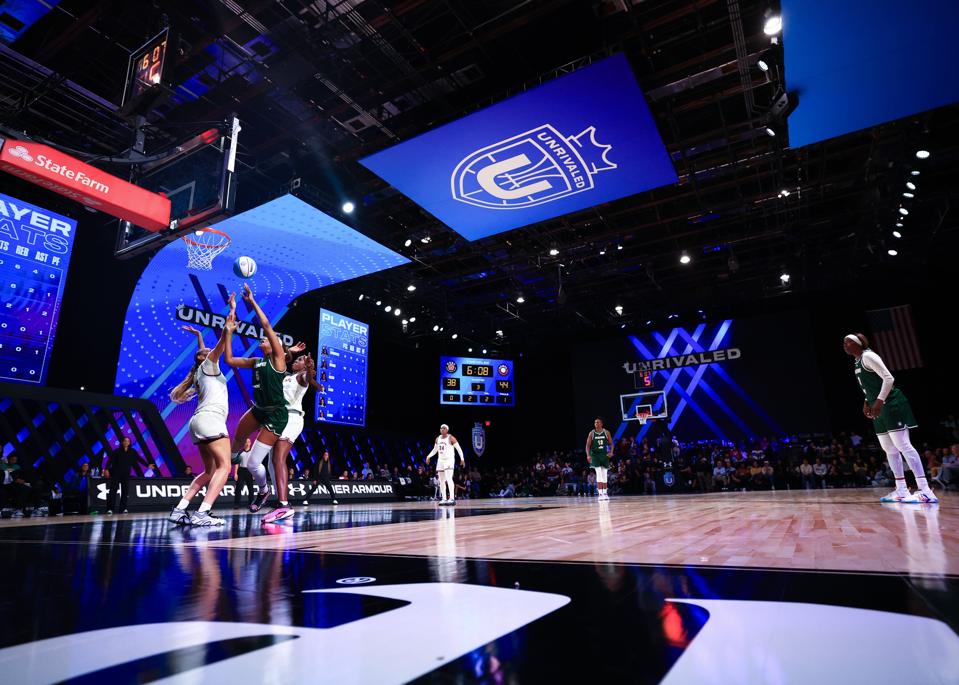This morning, Forbes published its annual Most Powerful Women in Sports list, led by ForbesWomen President and Publisher Moira Forbes, capturing a historic shift in who controls the capital behind America’s fastest-growing sports enterprises. From owners and investors to athletes and innovators, the women on this year’s list aren’t just influencing the game they’re redefining its economics.
At #1 Gayle Benson, owner of the New Orleans Saints and Pelicans, sits atop the list as the only woman to control franchises in both the NFL and NBA, with a combined valuation of $8.35 billion. #10 Clara Wu Tsai, co-owner of the Brooklyn Nets and New York Liberty, has transformed the Liberty’s valuation from $14 million to $400 million in six years, a 25X gain that validates her early conviction that women’s teams could become profit engines. #5 Michele Kang built the first global, multi-club platform in women’s soccer the Washington Spirit, OL Lyon, and London City Lionesses while investing more than $55 million in women’s-sports infrastructure. #17 Kara Nortman, co-founder of Angel City FC and Monarch Collective, proved the thesis at scale: Angel City is now valued near $280 million after launching just four years ago. And #7 Jessica Berman, commissioner of the National Women’s Soccer League, has turned the NWSL from crisis to growth, negotiating a $240 million media-rights deal, tripling attendance, and introducing free agency that shifted leverage to players.
Collectively, these leaders illustrate a financial truth: over the next five to seven years, returns in women’s sports could outpace those in men’s sports across sponsorship, media, and franchise valuations. The reason is simple we’re still in the early innings of a global revaluation.
The Investment Case for Women’s Sports
For decades, men’s sports captured the lion’s share of capital and attention. But that asymmetry has reversed. Mature men’s leagues from the NFL to the Premier League are now fully valued, with limited multiple expansion left. Women’s sports, by contrast, remain an undervalued asset class with the strongest demographic, cultural, and digital tailwinds in modern entertainment.
The numbers speak loudly. Sponsorship engagement rates for women’s sports content are 2.6 times higher than for men’s content, and nearly one in four new sponsorship dollars now flows to women’s properties. Audiences are younger, more global, and digital-first. The 2024 NCAA Women’s Basketball Championship drew 18.9 million viewers, surpassing the men’s final for the first time driven by #4 Caitlin Clark, whose presence alone generated 26.5% of all WNBA economic activity last season. The WNBA’s current media-rights deal is expected to quadruple in the next cycle as Clark’s impact redefines the league’s market value.
From an investor’s perspective, this is a textbook early-stage opportunity: assets priced at venture multiples, audiences compounding quarterly, and advertiser demand accelerating.
My own TEDx talk, titled “The Billion-Dollar Blindspot: Why Women’s Sports Is the Investment Opportunity for the Coming Decade,” argued that the moment to act is now and the marketplace is proving it right.
The Undervalued Asset Class of the Decade
If there were any doubts, Angel City Football Club erased them. In mid-2024, Bob Iger and Willow Bay acquired a controlling stake at a valuation of roughly $250 million, the highest in women’s-sports history validating early investors with a near-100X return.
That level of growth may not repeat overnight, but 10X returns are increasingly plausible across the women’s-sports landscape. NWSL and WNBA franchises now command valuations between $125 million and $350 million, with expansion teams attracting waitlists of institutional investors. Private-equity firms, family offices, and sovereign wealth funds are entering not as philanthropists but as growth allocators, drawn by audience passion, sponsorship efficiency, and scalable infrastructure.
And innovation continues to accelerate. #9 WNBA stars Breanna Stewart and Napheesa Collier founded Unrivaled, a 3-on-3 league that raised $35 million, landed a TNT broadcast deal, and achieved a $340 million valuation in its soon to be second season proving that new formats can generate institutional-grade returns.
Leadership and Leverage
The women on Moira Forbes’ list represent every layer of this transformation. Benson’s ownership empire anchors institutional credibility. Wu Tsai integrates data and social equity into sports operations. Kang and Nortman are scaling multi-club and multi-asset models. Berman is professionalizing league governance. Clark, Stewart, and Collier embody the athlete-as-entrepreneur era.
Power in women’s sports now extends far beyond the field. It’s about leverage financial, cultural, and technological. Over the next decade, expect a seismic reshaping of the sports-investment landscape. Streaming, legalized wagering, athlete-equity structures, and fan-ownership models will converge to create liquidity and transparency like never before.
Investors who bought into men’s leagues decades ago purchased stability. Those investing in women’s sports today are buying growth asymmetric upside aligned with generational and cultural megatrends.
As Moira Forbes notes, “Who controls capital now determines what gets built and who profits for decades.” The Forbes list celebrates individual power, but the deeper story is collective potential an entire sector entering its compounding phase. For investors willing to look where the market isn’t yet fully priced, women’s sports may prove to be the most rewarding growth story in modern entertainment.
Disclosure: The author is an active investor in sports and media businesses including women’s professional sports teams and leagues mentioned in this article, including but not limited to Unrivaled. He is also the co-founder of the National Thoroughbred League.

